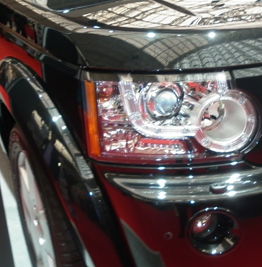Connectivity is a key theme in modern vehicle manufacturing. Arguably, as devices become smarter, the everyday automobile is shaped by these kinds of advances. Yet, as vehicles become increasingly connected too, the urgency for cybersecurity is on the rise, say Keith Michaels, the specialist car insurance brokers.
Many may not consider their connected vehicle as an easy target of opportunistic digital crime. But cyber-attacks on connected cars is increasingly a worry for vehicle-manufacturers and owners alike. In the last year alone, these malicious cyber-attacks have increased 99 per cent, according to the comparison website Uswitch. Around 67pc of all new cars sold are connected in some way. Forecasting for vehicle manufacturing expects this number to rise, climbing to 100pc by 2026.
A ‘connected’ car is, essentially, a vehicle that accesses driver data and transmits it back to the manufacturer over the internet. A connected car is also one that can perform modern tasks, such as linking your smartphone, remote locking, or a host of other car-friendly apps that can run on behalf of the driver.
This is where cyber-criminals can take advantage of weaknesses in connected vehicles. Connected cars can collect up to 25GB of personal data per hour, presenting an opportunity for hackers to remotely gain unauthorised access to a vehicle network. This compromised system is both a safety risk and presents a vulnerability for private user data to be breached, leaked, or ransomed.
There are some best practices that can helpfully guide, and improve, cybersecurity in connected vehicles, whilst answering to growing demand for a personalised and secure, driving experience.
Car manufacturers and regulators are increasingly aware that security, in their vehicles, is not static. But British Standards (BSI) is collaborating with key experts in the automotive trade – including Jaguar, Ford, and Bentley. Through a mutual effort, and care for cybersecurity, these carmakers and regulators are working to establish critical guidance on the future of data privacy and automated car technology. It’s predicted that soon cybersecurity issues will be included in insurance policies, which can be helpful for consumers who want to be mindfully mitigate these risks.
For car manufacturers, however, mitigating the risks of cybercrime starts with the production line. Using connectivity in mindful, productive ways to enhance the driving experience can help steer how consumers use this for functionality. Instead, experts suggest focusing on e connectivity to improve essential functions in a vehicle. This can limit the amount of private data that gets shared with the car manufacturer, instead focusing on the car experience enjoyed by the consumer.
For a stronger, safer future for cybersecure manufacturing, clarifying what happens to private consumer data is mission critical. This comes as the central government tightens regulation and compliance on the sharing, storing and access of private data – especially as plans are expected to hail data ownership as a key topic.
Manufacturers looking to pool resources – especially ideas – are seen to be at the front line of curbing cybercrime and the impacts on connected cars. Being a voice in this conversation is an easy way to empower your brand and build up a reputation for safety and risk mitigation.
Aside from involving yourself in key conversations and building relationships where it counts – brands can nurture a sense of creativity in their production lines and borrow existing security measures to build up their layers of protection. This can include embedded virus-protection on the infotainment system and building out a functionality-led driving experience. Keeping frilly applications, and un-vetted third-party apps, away from user data is one such way to ensure privacy is at the front of your process. With cyber-criminality on the rise, the urgency to invest in security issues has never been more prevalent. Car manufacturers and regulators alike need to jointly discover the resolve.










